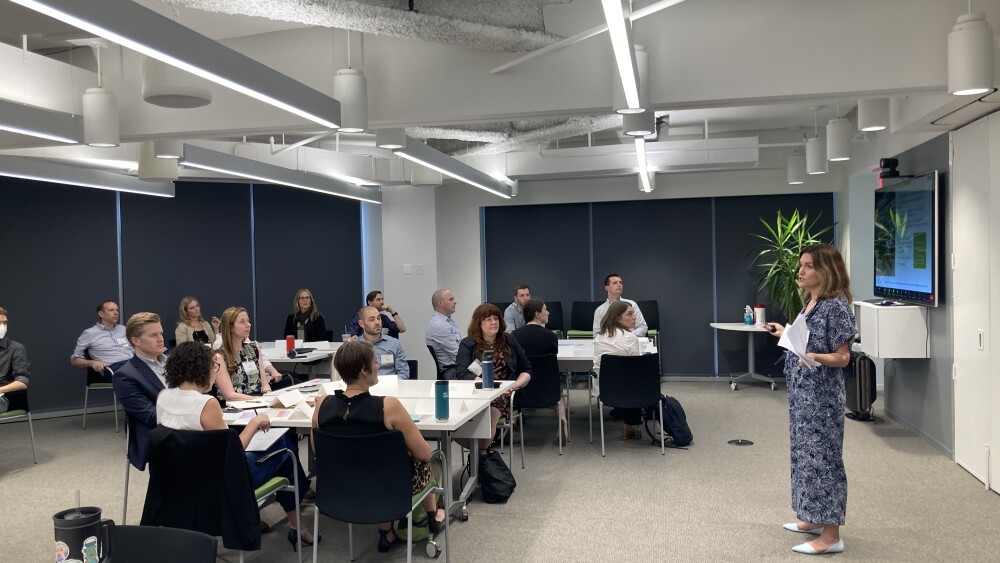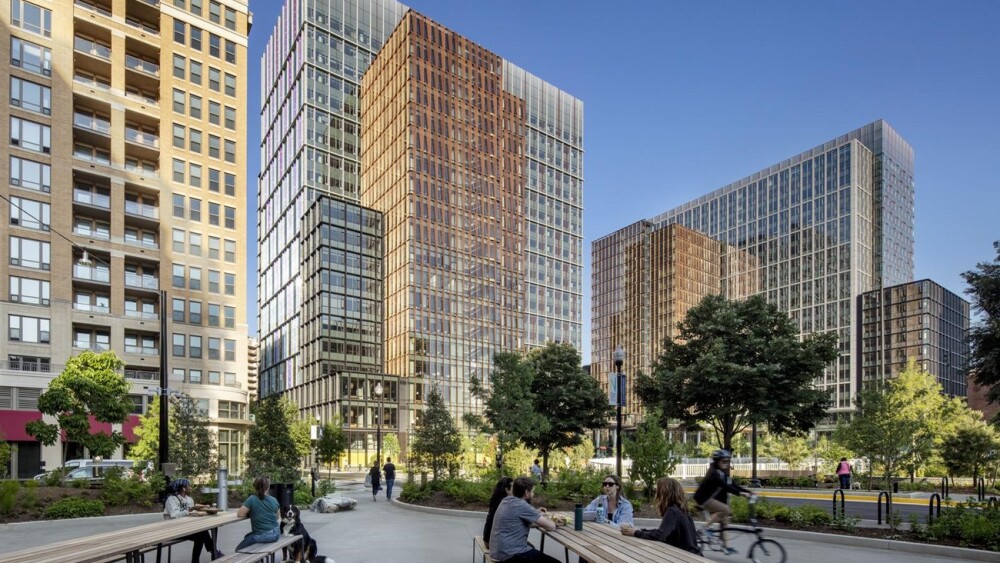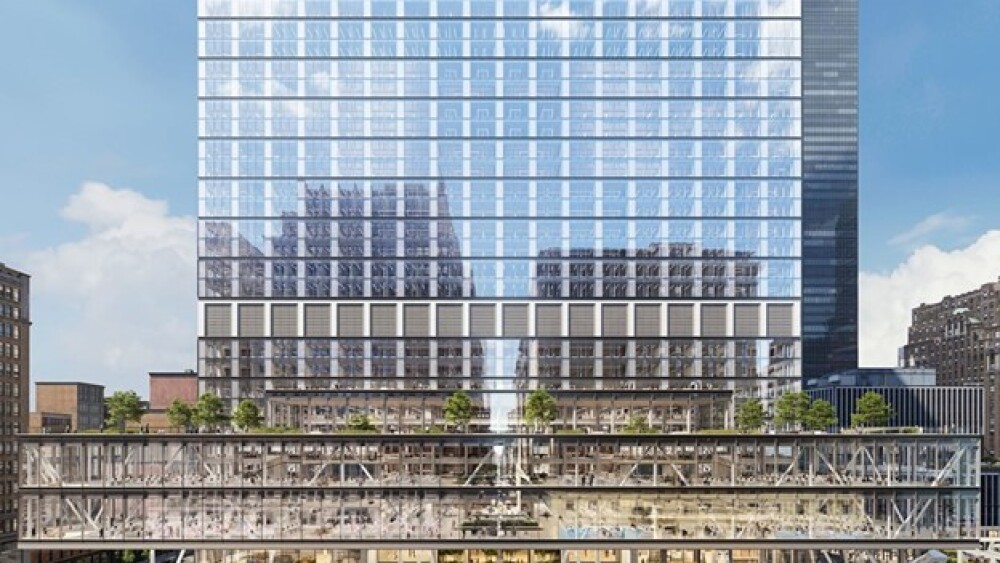The industry’s movement to reduce embodied carbon in buildings is advancing faster than it did with respect to operational carbon. And yet, there are still misunderstandings and missed opportunities for collaboration across stakeholders as they work to decarbonize.
On June 4th, 2024, the Urban Land Institute hosted its third Embodied Carbon Convening at ULI’s Washington, DC headquarters location. Bringing together experts in development, architecture, design, and structural engineering, the event focused on specific strategies for reducing embodied carbon at every stage of the real estate development process and ways that stakeholders can work together to accelerate impact.
Embodied carbon refers to the greenhouse gas emissions resulting from the manufacturing, transportation, installation, maintenance, and disposal of building materials. Estimates suggest that embodied carbon from construction materials contributes around 11 percent of global carbon emissions each year.
The recent ULI embodied carbon event built on the work of two similar convenings that ULI hosted last year. The first, which took place in January 2023, brought C-suite real estate developer and construction executives together for the first time to discuss the importance of embodied carbon for business success, as well as reduction strategies across projects and portfolios. At the second event in September 2023, ULI convened representatives from the steel and concrete industries with developers to discuss how building material suppliers can meet the burgeoning real estate demand for low embodied carbon materials in a cost-effective and scalable way.
This third event connected developers with experts from the architecture, structural engineering, and design fields from firms such as Gensler, Atelier Ten, Thornton Tomasetti, KPF, EHDD, Hickok Cole, and others. In addition to sharing advanced technical knowledge on embodied carbon reduction strategies, the group emphasized the importance of cross-industry partnerships and integrated design processes to meaningfully reduce embodied carbon of new developments.
The convening heightened the importance of design professionals’ role in embodied carbon reductions. While operational carbon has the potential to decrease annually over time with efficiency updates and a greening utility grid, there is no opportunity to decrease the embodied carbon of a building after its constructed. Over the lifetime of a building, embodied carbon from materials and construction can account for half of a building’s total carbon emissions. This leads to the urgent need to address embodied carbon now, as global building floor area is expected to double by 2060.
Katie Mesia, principal at Gensler, explained how and why design professionals have a huge potential impact on not only each building they design, but also on the built environment as a whole. The decisions made by engineers and designers during a project can greatly influence the total embodied carbon of a development, and architects and structural engineers can champion embodied carbon reductions through thoughtful design and material selection with their developer clients.
Jack Rusk, director of climate at EHDD Architecture, shared the embodied carbon reduction strategies implemented at the AIA HQ building renovation in Washington, D.C. By taking a “whole life carbon” view of the project, the project team targeted full carbon neutrality by proposing a local and socially responsible community renewables project to offset all remaining embodied carbon after design and construction reductions, with the cost of it to be included within the project budget.
Attendees from across the developer and architecture/structural engineering disciplines participated in small group discussions focused on specific actions that real estate project teams can take to reduce embodied carbon at each phase of the development process. The groups analyzed how firms can support embodied carbon reduction through corporate policies, as well as during pre-design, design development, construction, occupancy, and the building’s end-of-life.
An upcoming ULI resource draft provided the framework for the discussions. This resource, which will be released in Fall 2024, aims to provide a comprehensive timeline of the real estate development process and highlight specific intervention points for reducing embodied carbon – from SD to DD through Deconstruction. Unlike a standard report, this resource will be digital, interactive, and offer project teams a roadmap for reducing embodied carbon from project kick-off through a building’s end-of-life.
After reviewing, debating, rewriting, and thoroughly discussing strategies for reducing embodied carbon, groups reported out their suggestions and edits for the resource, all the while including their own experiences and successes in reducing embodied carbon in new building and major renovation projects as a demonstration of industry examples and strategies. The important thing each group noted is “who holds the glass ball”—the concept that despite embodied carbon reductions needing all stakeholders collaborating at the table, there’s still one entity that must be on point to ensure the project follows through. More often than not, its the developer who needs leadership to be bought in and have the vision, while the design team is needed to ensure follow-through and implementation.
Michael E. Cropper, associate principal at Thornton Tomasetti shared the Metropolitan Park 678 project story, the location of Amazon’s HQ2 and with almost 200,000 cubic yards (152,911 cubic meters) of concrete, and the first major project in the DC metro area to target embodied carbon reductions. Key strategies included engaging the contractors and suppliers early in the project, establishing performance-based metrics, and incentivizing innovation and collaboration. According to Michael, “Projects like Metropolitan Park 678 are lighthouses that lead the way to lower embodied carbon for building projects in their regions.”
Leanora Paniccia, Director in the New York office of architecture firm Atelier Ten, shared the embodied carbon study for Vornado’s Penn 2 redevelopment in New York City. A major takeaway from Penn 2 is that the reduction in up-front embodied carbon emissions vastly outweighed the emissions added for the renovation and the adaptive reuse of the foundation and structure eliminates.
The entire group passionately discussed next steps on how to push the industry forward in prioritizing and sharing success in reducing embodied carbon emissions. Various testimonials heard around the room:
- The Glass Ball metaphor:
- “Look at the steps for ‘this is the critical path’ and make sure the glass ball stays intact.”
- Policy:
- “Who should be here [at the ULI embodied carbon convening] next? National policymakers and local.”
- The US White House, Department of Energy, General Services Administration, and Environmental Protection Agency are really smart on embodied carbon.”
- Educating Teams:
- “It is important to meet people where they’re at, help bring them along in a way that’s accessible.”
- “I have to convince my entire Design & Construction team to take action on embodied carbon. My firm doesn’t have any embodied carbon targets, doesn’t plan on setting any anytime soon. We need them to be comfortable with some of these baby steps. It would be helpful for them to hear other groups, how they took their first baby steps.”
- “We need a script for how to speak with non-sustainability people about this. Simplify it instead of complicating it more.”
- Investors:
- “If you get institutional investors in the room, that’s who makes the decision.”
- “If our investors tell us to do something, we’ll figure out how to do it.”
- “And we can teach investors how to measure it, what the KPIs should be.”
ULI is continuing to build on its existing embodied carbon work through reports, resources, and subsequent convenings, with its next embodied carbon convening planned for early 2025 bringing together developer and investor stakeholders. ULI will be releasing the “Embodied Carbon Intervention Points” resource later this year showcasing projects that successfully reduced embodied carbon throughout the development cycle, and will also be sharing more actionable toolkits and RFP language that developers and project teams can use in practice. If you would like to get involved with ULI’s embodied carbon work, or have any questions please email [email protected].











